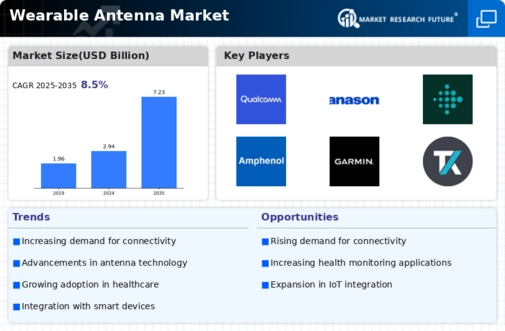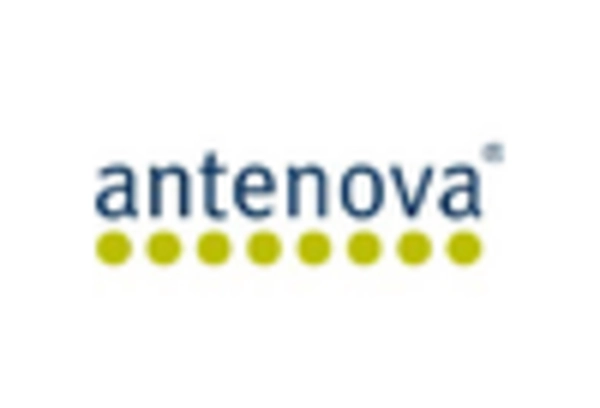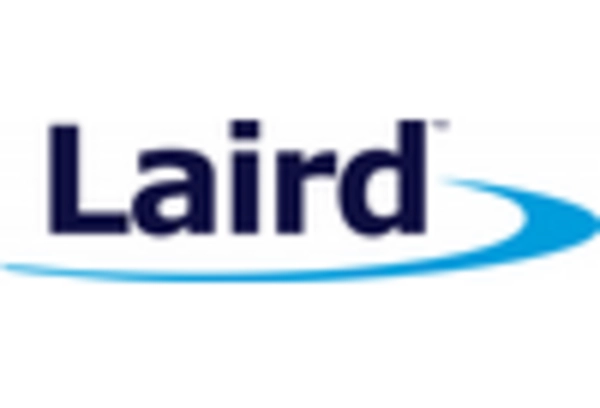Growing Adoption of Smart Clothing
The trend towards smart clothing is emerging as a key driver for the Wearable Antenna Market. As consumers seek more integrated and multifunctional apparel, manufacturers are increasingly embedding antennas into clothing to facilitate connectivity. This innovation allows for seamless communication between the garment and other devices, enhancing user experience. The smart clothing market is projected to reach USD 4 billion by 2025, indicating a robust growth trajectory. This surge in demand for smart textiles is likely to create new opportunities for antenna manufacturers, thereby positively impacting the Wearable Antenna Market.
Advancements in Communication Technologies
The rapid evolution of communication technologies, including 5G and IoT, is significantly influencing the Wearable Antenna Market. The deployment of 5G networks is expected to enhance the performance of wearable devices, allowing for faster data transfer and improved connectivity. This shift is likely to increase the demand for specialized antennas that can operate efficiently within these advanced networks. Market data suggests that the 5G technology market is anticipated to grow to USD 700 billion by 2026, which could further stimulate the need for innovative antenna solutions in wearable devices, thereby benefiting the Wearable Antenna Market.
Rising Demand for Health Monitoring Devices
The increasing emphasis on health and wellness is driving the Wearable Antenna Market. Consumers are increasingly adopting wearable devices that monitor vital signs, such as heart rate and blood pressure. This trend is supported by a report indicating that the wearable health technology market is projected to reach USD 60 billion by 2026. As a result, manufacturers are focusing on integrating advanced antenna technologies to enhance connectivity and data transmission capabilities in these devices. The demand for reliable and efficient antennas is crucial for ensuring accurate health monitoring, thereby propelling the growth of the Wearable Antenna Market.
Emergence of Consumer Electronics Integration
The integration of wearable technology into consumer electronics is becoming a prominent driver for the Wearable Antenna Market. As devices such as smartphones, tablets, and smartwatches increasingly incorporate wearable features, the demand for efficient antennas is rising. This trend is reflected in the anticipated growth of the consumer electronics market, projected to reach USD 1 trillion by 2026. The convergence of these technologies necessitates the development of compact and high-performance antennas that can support various functionalities. Consequently, this integration is likely to propel advancements in the Wearable Antenna Market.
Increased Focus on Sports and Fitness Applications
The sports and fitness sector is witnessing a surge in the adoption of wearable technology, which is driving the Wearable Antenna Market. Athletes and fitness enthusiasts are increasingly utilizing devices that track performance metrics, such as distance, speed, and calories burned. This trend is supported by market data indicating that the fitness tracker segment is expected to grow to USD 30 billion by 2025. As a result, there is a growing need for antennas that can provide reliable connectivity and data accuracy in these devices. This focus on performance tracking is likely to enhance the demand for advanced antenna solutions within the Wearable Antenna Market.
















Leave a Comment